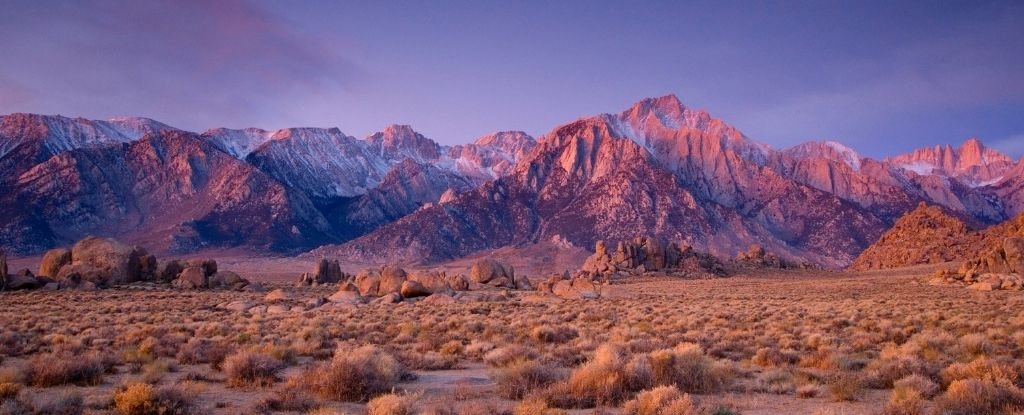
The Sierra Nevada mountain range is a mystery to geologists.
Despite being one of the largest mountain belts in the world, no one really knows when or how the crests and peaks of its night silhouette first appeared.
California's extensive mountain range is thought to be only 3 to 5 million years old, while other evidence suggests it's 40 million years old.
That's a huge discrepancy, but what if those dates are correct?
New research from the giant basin to the southeast of the Sierra Nevada has helped explain the mystery.
Researchers think that the Sierra Nevada might have two birthdays after all.
Lund Snee, who helped conduct the research, says that the Sierra Nevada is old and young for different reasons.
The original Sierra Nevada seems to have died between 20 and 40 million years ago, before being born in a series of geological events that began around 10 million years ago.
The old Sierra Nevada, the one that began in central Nevada during the time of the dinosaurs, now lies in the shadow of its younger alter ego, which sits in California.
Death Valley lies to the east of the Sierras. The formation of Titus Canyon was thought to have been created by run-off from the surrounding basin.
A pair of geologists challenged the explanations a decade ago, suggesting the layers of rock pointed to a different source.
Elizabeth Miller found that the sediments must have been brought to Death Valley via high energy rivers and streams no earlier than 38 million years ago.
It is certain that the material collected at this low point was brought there from what was once a higher range of volcanoes.
The findings suggest the US Continental Divide is not static. Miller thinks the Sierra Nevada has had three different life histories.
The first life it lived was 100 million years ago in central Nevada, where there were a lot of volcanoes.
Researchers think that the great divide began to migrate southeastwards about 40 million years ago. The Earth was lifted by more than a kilometer of magma when the volcanos in central Nevada began to release lava downhill to the west.
Miller found volcanic material from the east to the west in Death Valley after the upward activity triggered a new set of rivers. During the gold rush, these flows carried lots of gold to California.
The authors say that the peaks and crests of the younger Sierra Nevada range were chiseled out by further tectonic activity.
The new findings help explain conflicting dates on the origin of the Sierra Nevada, and they also reveal important ways in which native plants and animals in California might have evolved with the changing landscape.
Miller says that you need to know when things happened and how long it took to understand them.
The story is getting tighter and tighter as we pick up more pieces.
The new research was published in the journal of the Geological Society of America. The research can be read here and here.
